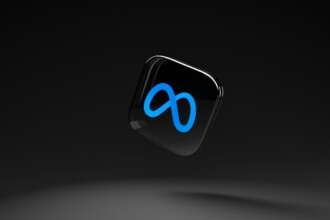What has actually happened to Telegram crypto project?

TON & Gram: how it started and why it ended. Source: ico-telegram.org
About a year ago, users noticed a new section dedicated to the Grams Wallet crypto wallet on the official website of the Telegram messenger and started wondering about its prospects. Some were excited, but more were skeptical, especially considering Telegram’s conflict with SEC.
After long months of legal debates, Pavel Durov, founder and CEO of the Telegram admitted the company was giving up on the project after the US court banned Gram sales globally.
Today, PaySpace Magazine Global will remind you of the sad story behind the promising Telegram crypto project.
TON creation
Since 2017 the team at Telegram had been developing a new blockchain platform called the TON Blockchain and native cryptocurrency called Gram.
Telegram Open Network (TON Network) is a blockchain project created by Pavel Durov to build a platform that disrupts the decentralized application space by leveraging Telegram’s wide user base. The platform promised the speed and scalability that are important for the mass adoption of cryptocurrency. Through TON, Telegram users were supposed to be able to buy, transfer, and store value in ID-verifiable wallets facilitated by the GRAM coin.
Telegram and its affiliates have not made any promises or commitments to develop any applications or features for the TON Blockchain or otherwise contribute in any way to the TON Blockchain platform after its launch. Rather, the Telegram’s team hoped that the decentralized community of third-party developers would contribute to the TON ecosystem through the development of applications and smart contracts.
Gram
Gram is a cryptocurrency based on the TON blockchain platform. In February and March 2018, investors bought the first Gram tokens at a price of $0.37 and $1.33, respectively. The company raised $1,7B during the course of bidding.
On October 2, 2019, Telegram sent letters to investors with links to the TON key generator, which provided access to Gram tokens. That was one of the first batches of digital money that the company was obliged to send to depositors by October 31. However, the release of the project was delayed upon the decision of the US Securities and Exchange Commission (SEC).
The SEC explicitly stated that the proposed business model was too opaque. It said Telegram had failed to register their offers and sales of Grams, which SEC said were securities, in violation of the registration provisions of the Securities Act of 1933. Telegram responded to the United States securities regulator, arguing that Gram, the native cryptocurrency for the Telegram Open Network (TON), was not a security.
The company warned its customers that they should not expect any profits based on their purchase or holding of Grams, and Telegram makes no promises it would ever become profitable. Grams were intended to act as a medium of exchange between users in the TON ecosystem. The statement clarified that “Grams are NOT investment products and there should be NO expectation of future profit or gain from the purchase, sale or holding of Grams.”
Grams did not represent:
- Any equity or other ownership interest in Telegram or its affiliates
- Any rights to dividends or other distribution rights from Telegram or its affiliates
- Any governance rights in Telegram or its affiliates.
Telegram also informed investors that the cryptocurrency launch was put on hold until the situation with the SEC resolved.
In November, Pavel Durov’s project team launched a test version of the Gram cryptocurrency wallet based on the TON blockchain platform, and its distributions got available for download despite the conflict with SEC.
Legal case

Legal case. Source: pixabay.com
After deeming Telegram’s initial coin offering (ICO) illegal on account of the fact that the Token Offering wasn’t properly registered in the USA, the SEC also filed a temporary restraining order, setting a court hearing in New York for Oct. 24. After an exchange of filings, the hearing on the case was postponed until Feb. 18–19, 2020.
The judge hearing the case, P. Kevin Castel, ruled that Telegram should not distribute its tokens before that date, and not until the court made its decision on the case. Hence, the official launch of the project was postponed until the end of April 2020.
Telegram lost its first court appeal in March, with a U.S. District Court judge ruling that the Gram sale was in breach of the Securities Act. On March 24, 2020, SDNY Judge Castel granted the SEC’s motion for a preliminary injunction, adopting the SEC’s proposed order “prohibiting the delivery of Grams to the Initial Purchasers.”
Telegram asked the court to limit the scope of the recently issued preliminary injunction as the legislation is applicable only to US persons. Telegram sought clarification that the order did not prohibit the distribution to foreign initial purchasers. However, the court rejected Telegram’s request, considering that Telegram’s distribution, even if made only to foreign initial purchasers, would likely result in a distribution back to the US. Namely, the initial purchasers could likely resell the Grams in a public market that could include US citizens.
On June 26, Judge Kevin Castel signed the final judgment in the SEC v. Telegram case, which prohibited Telegram from selling Gram crypto-assets worldwide and required Telegram to pay back $1.2 billion to investors in their ICO for the failed Telegram Open Network.
The outcome of the case will potentially establish a long-lasting precedent that could have significant effects on the way cryptocurrencies and other blockchain-based digital assets are categorized in the future.
Efforts to proceed
The main alternative version of the Telegram Open Network called Free TON went live on May 7. The launch was organized by independent developers, major validators, and other participants, but without Pavel Durov. Moreover, Durov called on the crypto enthusiasts to beware of similar projects.
Nevertheless, over 170 companies and individuals have signed the Free TON launch declaration. They also organized an online conference on their Youtube channel, where the further development of the project was discussed. Instead of Gram, the Free TON blockchain will present free TON Crystal (TON) tokens with the total amount capped at 5 billion. 85% of those crypto-assets will be received for free by partners and network users, 10% – by developers, the remaining 5% of coins will be distributed among the network validators who execute the transaction confirmations.
Nearly 7000 members have now joined the Free TON community. For their project, the developers used technical documentation and publicly available Telegram code. Since TON was an open-source project, its entire code was published on GitHub in 2019.
TONCommunity.org, the Chinese spin-off of the popular project, launched Testnet and Token Airdrop in July. As the official TON developer announced that their testnet will be shut down by August 1, 2020, TONCommunity.org invited the community to join the new “testnet 3” as validators to continue using the network. The new project’s key members now include people from different countries like China, Singapore, and Russia.
Newton is another alternative project created by enthusiasts teamed up to finish work on the next generation blockchain TON. The Newton project intends to create bots and branches of Telegram applications (like Telegram X) with built-in wallets, transferring of grams, and other blockchain functionality. Members of the community are located in different parts of the world, do not belong to any commercial organization, nor do they include any former or current Telegram employees.
SEE ALSO:








